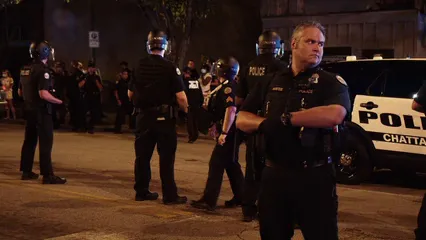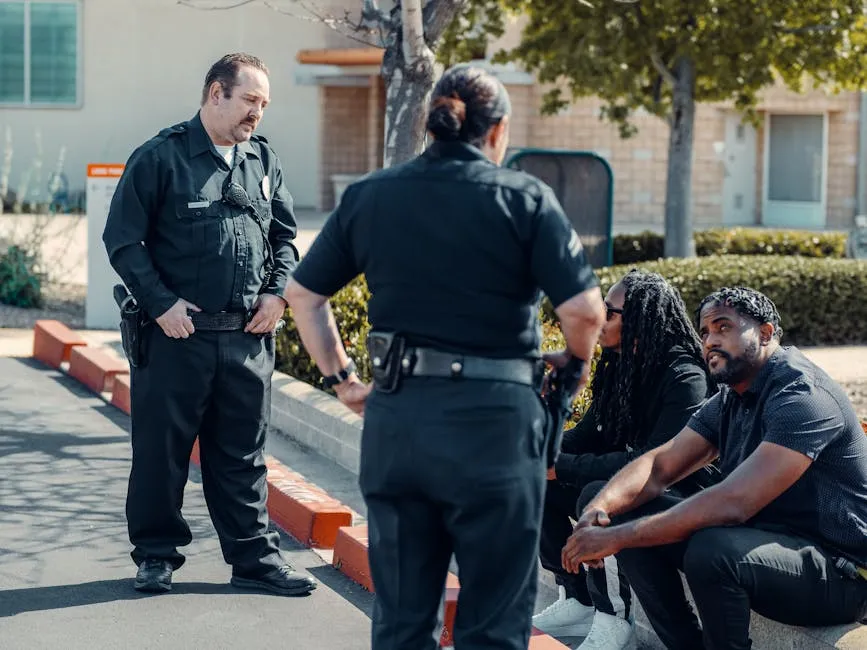Introduction
Understanding crime statistics is essential for everyone. Residents want to feel secure in their neighborhoods. Potential movers need insights to decide if Vancouver is right for them. And visitors? Well, they just want to avoid stepping into trouble.
Vancouver, BC, is more than just a pretty face. Known for its breathtaking views, vibrant culture, and diverse communities, it’s a city that many dream of calling home. With its picturesque mountains, lush parks, and bustling urban life, it’s no wonder Vancouver consistently ranks high on livability lists. But beneath the surface of this beautiful city lies a reality that needs attention—its crime rates.
This article aims to provide a comprehensive analysis of the latest crime statistics in Vancouver, BC. We’ll look at how these numbers stack up against national averages and what they mean for the people who live, work, and visit here. Buckle up as we venture into the numbers and uncover the truths behind Vancouver’s crime statistics!

Understanding Crime Statistics
What Are Crime Statistics?
Crime statistics are like a public safety report card. They track the frequency and types of crimes happening in a particular area. Knowing these numbers helps everyone—from government officials to everyday citizens—make informed decisions about safety. A good understanding of crime data can guide community programs and policing strategies.
In Canada, crime statistics are collected and reported by various agencies, with Statistics Canada being the heavyweight champ. They gather data from police services across the country and compile it into annual reports, giving us a clear view of crime trends. This data is crucial for understanding not just how much crime occurs, but also the types of crimes that affect communities.
To dive deeper into the psychology behind crime, consider reading The Psychology of Criminal Conduct by D.A. Andrews. This book provides insight into the factors that drive criminal behavior and the psychological profiles of offenders.

Key Crime Metrics
– Crime Severity Index (CSI): This nifty index measures the seriousness of crimes reported. It assigns weights to different types of offenses, giving a clearer picture of overall crime severity. For example, a homicide carries a heavier weight than a petty theft. Knowing the CSI helps to understand not just how often crimes happen, but how severe they are.
– Violent Crime Rate vs. Property Crime Rate: These two categories are the bread and butter of crime statistics. Violent crimes include offenses such as assault, robbery, and homicide—those that directly impact a person. Property crimes, on the other hand, involve theft or damage to someone’s belongings. Understanding the differences between these rates can help communities focus their safety efforts where they’re needed most.
– Clearance Rates: This stat tells us how effective law enforcement is at solving crimes. A high clearance rate means that police are successfully closing cases, which can boost community trust. Conversely, low clearance rates might raise concerns about safety and police effectiveness. It’s a key metric in evaluating how well crime is being addressed in Vancouver.
Arming ourselves with knowledge about these metrics helps everyone stay informed and engaged with community safety. So, let’s keep our eyes peeled as we dive deeper into the specifics of Vancouver’s crime landscape!

Vancouver’s Overall Crime Statistics
Overview of Crime Rates (2020 Data)
Vancouver’s overall crime rating sits at a D+. This might not sound like a top-notch report card, but it gives us a glimpse into the city’s safety. Let’s unpack these numbers a bit.
When we stack Vancouver against British Columbia and the national average, things get interesting. The total crime rate in Vancouver is 25% higher than the national average. That’s quite a jump! Meanwhile, the violent crime rate is 6% lower than the national average, which is a silver lining. However, property crime rates in Vancouver surpass national figures, raising eyebrows and questions about safety.
Here’s a quick breakdown for clarity:
– Total Crime Rate: 25% higher than the national average.
– Violent Crime Rate: 6% lower than the national average.
– Property Crime Rate: Higher than the national average.
These statistics lay a foundation for understanding the broader picture of crime in the city. While Vancouver may have its charms, these numbers indicate that some neighborhoods might not be ideal for those looking for tranquility.

Detailed Crime Incidents
Now, let’s dive deeper into the specifics of crime incidents in Vancouver. In 2020, the statistics reveal a total of 5,289 incidents per 100,000 people in Vancouver. For comparison, British Columbia reported 6,040 incidents per 100,000, while the national average hovered at 4,223 per 100,000.
This means Vancouver’s crime rate is no small potatoes—it’s notably higher than the national average. Here’s how it looks:
– Total Crime Incidents:
- Vancouver: 5,289 incidents per 100,000 people.
- British Columbia: 6,040 incidents per 100,000 people.
- National Average: 4,223 incidents per 100,000 people.
Let’s break down the violent crimes further. The violent crime rate in Vancouver is recorded at 981 incidents per 100,000 people. This is lower than British Columbia’s 1,120 incidents per 100,000, but slightly above the national average of 1,042 per 100,000. Here’s the breakdown:
- Violent Crimes:
- Homicides: 10
- Assaults: 2,300
- Sexual Offenses: 623
Next is property crime, which shows a different trend. Vancouver’s property crime rate is 4,308 incidents per 100,000 people, considerably higher than the national average of 3,181. This raises alarms for potential residents and visitors alike. Here’s how property crimes stack up:
- Property Crimes:
- Thefts: 12,200
- Burglaries: 3,200
- Vehicle Thefts: 1,400
These statistics highlight not only the challenges Vancouver faces but also the specific types of crime that dominate the landscape. Understanding these dynamics can help residents, visitors, and potential movers navigate the city’s neighborhoods with more awareness.
In summary, while Vancouver has its beautiful scenery and vibrant culture, the crime statistics tell a different story. Awareness and understanding of these numbers are essential for anyone looking to call this city home or simply visit.

Trends Over Time
Vancouver’s crime statistics have seen some notable shifts recently. Over the past few years, there’s been a general decline in crime rates, particularly in property crimes. According to the Vancouver Police Department (VPD), the first half of 2024 showcased a continued decrease in various crime categories compared to the same period in 2023. For instance, break-and-enters plummeted from 1,604 incidents to 1,125, and theft of motor vehicles dropped from 417 to 335.
Despite these positive trends, violent crimes have shown a more complex pattern. Overall violent crime witnessed an uptick with 6,256 incidents reported in 2023, which is an increase from previous years. The rise is primarily attributed to the increase in assaults, which totaled 4,910. However, random stranger assaults have decreased, indicating an evolving nature of violent crime in the city.
In terms of property crimes, the numbers tell an interesting story. For example, from 2022 to early 2023, property crime saw a significant 7.3% increase. This rise in property crimes—especially vehicle-related incidents—contrasts with the overall decline in crime rates, suggesting that while some areas are improving, others still face challenges.
Overall, while there’s a positive trend in reducing certain categories of crime, the landscape remains mixed. Keeping an eye on these trends is essential for residents, potential movers, and visitors alike.

Crime by Demographics
Crime by Age Group
Crime statistics in Vancouver reveal intriguing insights when broken down by age group. For individuals aged 12 and above, the overall crime rate is approximately 1,062 incidents per 100,000. Youths aged 12-17 represent a significant portion of crime victims and offenders, with their crime rate at 562 per 100,000. This figure is notably lower than the provincial average of 672, suggesting that Vancouver may have implemented effective youth outreach and crime prevention strategies.
On the flip side, adults aged 18 and older face a higher crime rate of 1,086 per 100,000. This discrepancy highlights differing experiences of victimization and offending between younger and older populations. Youth are often more vulnerable to property crimes, while adults may encounter higher rates of violent crimes. Understanding these dynamics is crucial for developing targeted interventions aimed at reducing crime among both demographics.
To better understand the societal implications of crime, check out The Better Angels of Our Nature: Why Violence Has Declined by Steven Pinker. This book provides valuable insights into the decline of violence and the social changes that have contributed to this phenomenon.

Crime by Neighborhood
Vancouver’s crime statistics vary dramatically across neighborhoods, creating a patchwork of safety and danger. Some areas, like the Downtown Eastside, are notorious for high crime rates, particularly concerning property crimes and drug-related offenses. In contrast, neighborhoods such as Kerrisdale or West Point Grey boast significantly lower crime figures, creating a stark divide within the city.
To visualize these differences, maps detailing crime rates by neighborhood can be incredibly useful. They highlight not only hotspots for crime but also areas that are relatively safe. For instance, the crime rate in the Downtown area can hover around 6,032 incidents per 100,000, while more suburban neighborhoods report rates well below the national average. This geographical disparity emphasizes the need for localized crime prevention strategies and community programs to enhance safety in high-crime areas.

Gender and Crime
Gender plays a pivotal role in the landscape of crime in Vancouver. Men are often the perpetrators in violent crime statistics, which can skew perceptions of safety in public spaces. Conversely, women, particularly those from marginalized communities, face higher rates of victimization, especially regarding sexual offenses.
Recent statistics indicate that the chances of becoming a victim of violent crime in Vancouver stand at 1 in 102, with gender disparities evident in these figures. Female victims often report unprovoked attacks, highlighting ongoing issues surrounding safety for women in public spaces. Community initiatives aimed at increasing awareness and providing support services for female victims are essential in addressing these concerns and fostering a safer environment for all genders.
Understanding crime through the lens of demographics is vital for creating informed policies and community safety initiatives. By addressing the unique needs of various groups, Vancouver can work towards a more equitable and safer environment for its residents. You might also consider reading The Sociopath Next Door by Martha Stout. This book examines the prevalence of sociopathy and its implications for society.

Factors Influencing Crime Rates
Economic Factors
Economics and crime rates share a tangled relationship. When the economy flourishes, crime rates tend to decline. But when the economy sneezes, crime often catches a cold. Vancouver is no exception. Housing affordability is a real issue here. With skyrocketing prices, many residents find themselves in precarious situations, making crime an appealing option for some.
Unemployment also plays a significant role. High unemployment leads to desperation. When people struggle to put food on the table, some may turn to crime as a last resort. The job market’s fluctuations can greatly influence the city’s overall safety. In Vancouver, the economic pressures are palpable. The cost of living is steep, and the job market is competitive. This can create a breeding ground for crime, especially in vulnerable communities.
To safeguard your home, consider investing in a reliable Home Security System. It’s a proactive step to ensure your safety and peace of mind, especially in a city with fluctuating crime rates.

Societal Factors
Society’s ills often manifest in crime statistics. In Vancouver, drug use is a glaring example. Addiction issues can lead to increased crime rates, especially in certain neighborhoods. The Downtown Eastside is notorious for its drug-related crime. This area has become a flashpoint, where drug use, property crime, and violence intersect. When people are desperate for their next fix, petty thefts and more serious crimes can spike.
However, not all hope is lost. Community initiatives are stepping in to turn the tide. Programs aimed at rehabilitation and prevention are essential. For instance, local organizations work tirelessly to provide support, offering alternatives to crime for at-risk individuals. By addressing the root causes of drug addiction and crime, these initiatives aim to foster safer neighborhoods and reduce overall crime rates.
For those interested in understanding the biological roots of crime, The Anatomy of Violence: The Biological Roots of Crime by Adrian Raine offers fascinating insights into how biology can influence criminal behavior.

Police Presence and Law Enforcement
The Vancouver Police Department (VPD) is a crucial player in the city’s crime-fighting efforts. With a strategic approach to law enforcement, the VPD tackles crime head-on. They employ various tactics, from community engagement to targeted patrols. Community policing has gained traction in recent years, emphasizing building relationships with residents. This approach helps foster trust and encourages cooperation between the police and the community.
Crime prevention programs are also in place, focusing on educating residents about safety measures. These initiatives often involve collaboration with local organizations to enhance public awareness. The VPD has reported positive outcomes from these strategies, noting a decline in certain crime categories.
However, challenges remain. Underreporting of crimes and issues like abandoned non-emergency calls can skew the data. Despite these hurdles, the VPD’s commitment to community safety is evident. Their ongoing efforts aim to create a safer environment for all Vancouver residents, demonstrating the importance of police presence and proactive law enforcement strategies in reducing crime.

Conclusion
Vancouver’s crime statistics present a multifaceted view of public safety in this beautiful city. The overall crime rating is a D+, with a total crime rate 25% higher than the national average. While the violent crime rate stands 6% lower than the national average, property crimes tell a different story, with rates exceeding national figures.
Recent trends show a mix of progress and ongoing challenges. On one hand, there has been a notable decrease in certain categories of crime, particularly property crimes like break-and-enters and vehicle thefts. For instance, the first half of 2024 saw significant drops in break-and-enters from 1,604 to 1,125 incidents. The Vancouver Police Department (VPD) attributes these positive trends to effective policing strategies and community engagement.
On the other hand, the rise in violent crimes, particularly assaults, indicates that safety remains a pressing concern. The uptick in assaults, despite a decrease in random stranger attacks, highlights a need for continued vigilance and community involvement. Furthermore, the disproportionate victimization of marginalized groups, especially Indigenous women, emphasizes the urgent need for inclusive safety initiatives.
So, what can we do? Staying informed is key. Knowledge empowers residents to make safer choices and advocate for their communities. Participating in community safety initiatives can foster a sense of belonging and shared responsibility. Whether it’s joining neighborhood watch programs or attending town hall meetings, every action counts in making Vancouver a safer place for everyone.
Let’s work together to address these challenges and celebrate the improvements, ensuring that Vancouver remains a vibrant and welcoming home for all its residents and visitors.

FAQs
What is the current crime rate in Vancouver, BC?
The latest statistics show that Vancouver has a total crime rate of 5,289 incidents per 100,000 people. This figure is 25% higher than the national average of 4,223 incidents per 100,000. The violent crime rate is recorded at 981 incidents per 100,000, which is slightly lower than the national average of 1,042. Property crime, however, is a significant concern, with a rate of 4,308 incidents per 100,000, surpassing both the provincial and national averages.
Is Vancouver a safe city to live in?
Vancouver’s safety perception varies among its residents. Factors contributing to the perception of safety include neighborhood dynamics, visibility of police presence, and community engagement. While many areas are family-friendly and safe, some neighborhoods, particularly those with higher crime rates, might raise concerns. It’s essential to research specific neighborhoods and stay informed about local safety initiatives to get a well-rounded view of safety in Vancouver.
How do Vancouver’s crime rates compare to other major Canadian cities?
When compared to other major Canadian cities, Vancouver presents a mixed picture. For instance, Toronto has a lower overall crime rate, while Calgary’s property crime rates are somewhat higher. Montreal tends to have a lower violent crime rate than Vancouver. Each city has its unique challenges, but Vancouver’s property crime rate stands out as notably high. Understanding these comparisons can help residents make informed decisions about safety and security.
What should residents do to stay safe in Vancouver?
Residents can take several proactive steps to enhance their safety. Familiarizing themselves with their neighborhood’s crime statistics is a good start. Engaging with local community programs and neighborhood watch initiatives can foster a stronger community. Additionally, implementing personal safety measures, such as using well-lit routes when walking at night and securing homes with reliable locks, can significantly reduce the risk of becoming a victim of crime.
How can I access more detailed crime data for Vancouver?
For those interested in digging deeper into crime statistics, several resources are available. Statistics Canada provides comprehensive crime data and reports that can be accessed online. The Vancouver Police Department’s website also offers annual reports detailing crime trends and statistics. Local libraries often have resources, as well as community centers that host safety workshops and discussions. These tools can help residents stay informed and engaged with their community’s safety landscape.
For a deeper understanding of crime rates, check out this comprehensive analysis of Texas crime rate statistics.
Please let us know what you think about our content by leaving a comment down below!
Thank you for reading till here 🙂
All images from Pexels




